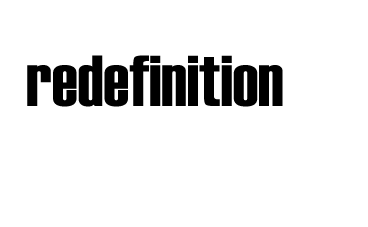Heuristic Redefinition

What are the Seven Creativity Tools?
The Seven Creativity Tools are a result of the work of Dr. Helmut Schlisksupp of the University of Heidelberg in Germany. He first researched creativity methods and techniques while working with a subsidiary of the Battelle Institute in Germany over 25 years ago. Subsequent work in applying creativity techniques in business applications resulted in the definition of 42 distinct creativity methods that he grouped into seven sets of tools. These tools include:
- Heuristic Redefinition
- Class Brainstorming
- Brainwriting 6-3-5
- Imaginary Brainstorming
- Word-Picture Association and Analogies
- TILMAG
- the Morphological Box
In this post, I’ll look at Heuristic Redefinition:
In summary:
Heuristic redefinition is a two-step process that begins by creating a visual presentation of a problem. This is followed by a systematic evaluation to search for the optimal solution to the problem. Development of a visual presentation is encouraged. It is accomplished by having a team draw a picture of the overall system as well as symbols or icons for the most important components of the problem.
The visualization process clarifies the problem as a system because the resulting picture reveals system components, its subsystems, and interrelationships expressed in terms of a specified goal.
Potential concerns, articulated as questions, are formed based on these interrelationships. The questions are systematically evaluated using a prioritization matrix where the likelihood of success, the effort needed, and the quality of the results of each are noted. Finally, the team discusses which concern is best suited in terms of success, opportunities, and/or innovations.
Five Steps of the Heuristic Redefinition Process (HRP)
These are defined as
- Define goals and opportunities. Objectives must be clearly stated. Is it a process metric that needs improvement? Is there functionality that needs to be integrated into the current system or process? Is there an undesirable effect to be reduced or eliminated?
- Map the process or system. Each step of the process or constituent element of the system must be identified. While this most often takes the form of a process map (a.k.a. wall-map, functional map or diagram, flowchart, swim lanes), systems are sometimes described using inter-relational diagraphs or tree representations.
- Express impact of each step or element. Each process step or system element is analyzed in turn. How does this step or element support the process or system? What is its role? What are its effects – both useful and harmful? The answers are ideally expressed fewer than five words; if more are needed, this could be an indication that Step 2 is incomplete ( i.e., has not been sufficiently expanded).
- Link each impact back to each goal. While Step 3 focuses on putting each step or element in context within the process or system, this step expressly contrasts the impact of each step or element with the objectives set forth in Step 1. How does this step or element support the goal(s)? How is it leveraged to realize the opportunity? How does it contribute to the problem? The output is then phrased as a question that defines the new problem to solve.
- Organize and consolidate statements. Finally, all problem statements that were generated need to be organized. Are there recurrent themes? If so, they may point to a powerful opportunity in that one solution may address several problem statements. Are there interactions among steps or elements? Perhaps there are synergies or contradictions that can be worked on. Is the problem statement stand-alone or isolated? Then there is an opportunity to work on a focused, well-scoped problem.
Check out this website for further information.


[…] its ability to deliver ideas directly into your brain through deliberate effort. For example the list of creativity tools referenced in the LearnSigma blog was the direct inspiration to this […]
Pingback by My Blog » Blog Archive » From Gembapantarei: 7 Creativity Tools | October 4, 2008 |
I’m new here.. just wanted to say hi!